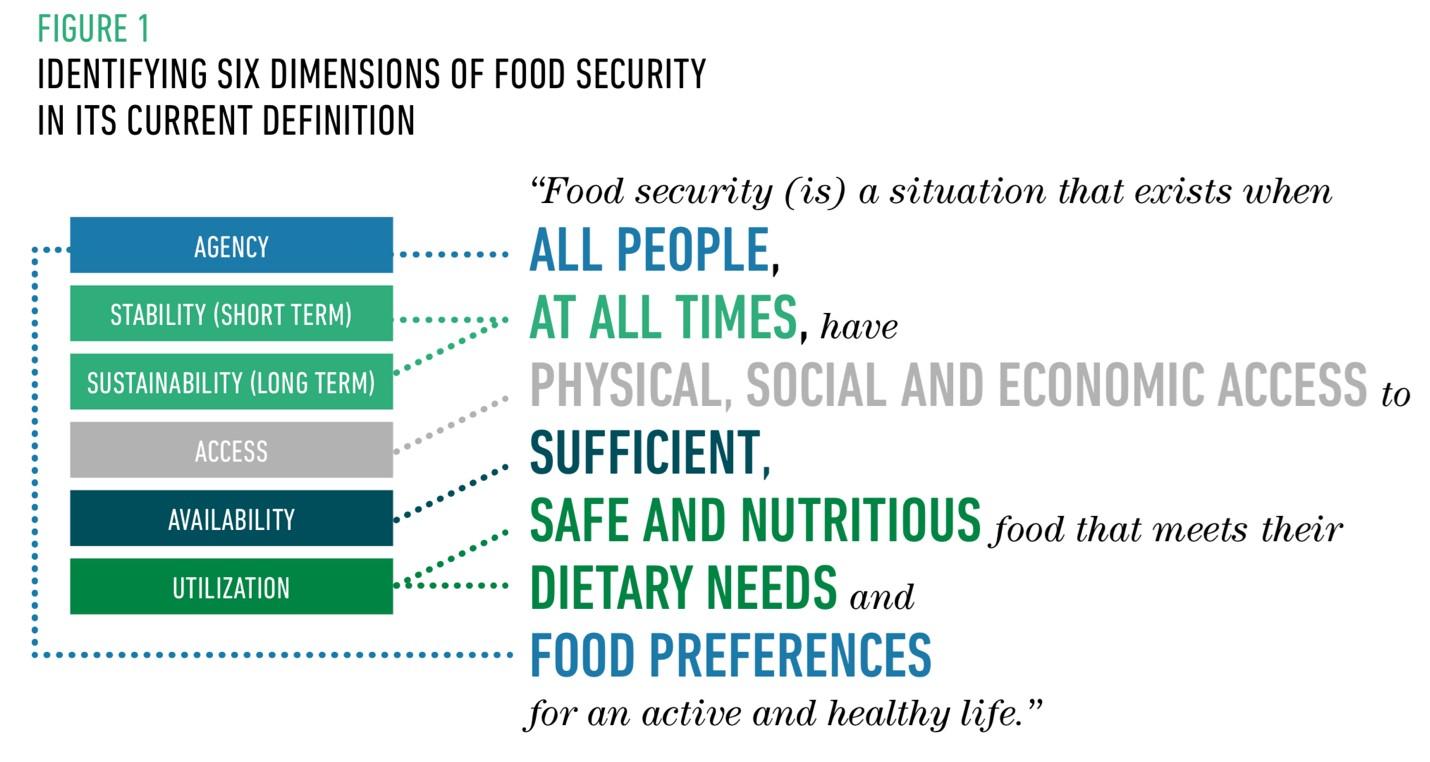By Winnie Bell and Jennifer Coates
Introducing Data4Diets – A tool for facilitating the use of dietary food security indicators, data sources, and methods for research and interventions
The most widely accepted definition of food security derives from the 1996 World Food Summit, which describes food security as a "state in which all people, at all times, have physical and economic access to sufficient, safe and nutritious food to meet their dietary needs and food preferences for an active and healthy life" (Food Agriculture Organization, 1996).
Experts agree that no single indicator can capture all of the dimensions of this definition. And yet, in practice, people commonly use single food security indicators without consideration of which dimensions of this definition are being captured (or not) by their chosen metric (Maxwell et al. 2014, Coates 2013). Given the multidimensional nature of the food security construct, there has been continued debate about the best way to conceptualize, select, and organize the array of existing food security indicators.
Most commonly, food security metrics reflect one of the 'pillars' of availability, access, and utilization (and sometimes also stability) (USAID, 1992; Webb & Rogers, 2003). Others have chosen to group food security indicators by the unit of observation, such as national, market, household, and individual (Lele et al., 2016). A new approach is taken in the Data4Diets platform (formally: Data4Diets: Building Blocks for Diet-related Food Security Analysis), which follows a framework proposed by Coates (2013) and identifies six policy-relevant dimensions of the food security construct that are inherent to the 1996 World Food Summit definition and have been shown to reflect people’s own experience of food insecurity: quantity (caloric sufficiency), quality (nutrient adequacy), preferability, safety, stability, and sustainability (Coates et al. 2006). The food security construct is ultimately about individuals (“all people at all times”), and each of these dimensions pertains to some aspect of food that is ultimately relevant to individuals’ diets. Assessing each of these dimensions at the national, market, household, and individual levels can tell us something about the context and constraints –related to availability, economic and physical accessibility, and utilizability – that affect the sufficiency, quality, preferability, safety, and sustainability of food from production to consumption. (Figure 1).
Figure 1

Identifying specific measures of each dimension at multiple levels is helpful for identifying priorities and shaping appropriate responses. For example, rather than knowing only whether food access or availability writ broadly is a challenge, measuring food security according to the multiple dimensions in this framework could reveal issues of constrained nutritious quality food in certain local markets and issues of food safety in others. These two problems are distinct, require different types of solutions, and should be tracked separately under the broader umbrella of “food security”.
The Data4Diets platform seeks to promote the measurement of these various diet-related food security dimensions and aid program implementers, policy makers, and researchers to identify which diet-related food security indicators and data sources are best suited for their objectives. Our process of mapping existing indicators to these dimensions highlights the need, and opportunity, to develop metrics that capture each dimension specifically. Most of the globally accepted indicators were designed to measure sufficiency and, increasingly, the quality of food. We identified few indicators that sought to measure food safety, stability, sustainability, and preferences.
Selecting an indicator that is specific to the dimension of food security being measured is just the first challenge. The Data4Diets platform also offers detailed information that describes how to construct and use each indicator, and identify which data sources and methods are preferred for which indicators. In addition, the platform provides summary case studies based on peer-reviewed journal articles, to demonstrate real-world application and use of the dietary-related food security indicators and data sources.

More specifically, the Data4Diets platform includes:
- Detailed information on over 40 diet-related food security indicators designed to help program implementers, policy makers, and researchers.
- Descriptions of 11 common data sources and methods to determine preferred resources for producing these indicators.
- Real world case studies showing how indicators have been used for diet-related food security policy and programming.
- Dynamic online repository of guidelines, articles, and studies relevant for indicator construction and use and downloadable as a single PDF document.
Do you want to learn more about the overall Data4Diets framework and how this resource can help you with your future research and program implementation? Are you interested in learning about diet-related food security indicators, data sources, and methods?
Watch the ANH Academy webinar from January 2020 to learn more about this new online resource developed by the International Dietary Data Expansion (INDDEX) Project of Tufts University:
References:
Coates, J. (2013). Build it back better: Deconstructing food security for improved measurement and action. Global Food Security, 2:3, 188-194.
Coates, J., Frongillo, E.A., Rogers, B.L., Webb, P., Wilde, P.E., & Houser, R. (2006). Commonalities in the Experience of Household Food Insecurity across Cultures: What Are Measures Missing? The Journal of Nutrition, 136:5, 1438S–1448S.
Food and Agriculture Organization (1996). Declaration on world food security. World food summit. Rome: FAO.
Lele, U., Masters, W.A., Kinabo, J., Meenakshi, J., Ramaswami, B., Tagwireyi, J., Bell, W. & Goswami, S. (2016). Measuring Food and Nutrition Security: An Independent Technical Assessment and User’s Guide for Existing Indicators. Measuring Food and Nutrition Security Technical Working Group. Rome: Food Security Information Network.
Maxwell, D., Viatla, B., & Coates, J. (2014). How do indicators of household food insecurity measure up? An empirical comparison from Ethiopia. Food Policy, 47, 107-116.
USAID (1992). Policy Determination: Definition of Food Security. Washington D.C.: USAID.
Webb and Rogers (2003). Addressing the “In” in Food Insecurity. Occasional Paper No. 1. USAID Office of Food for Peace.






